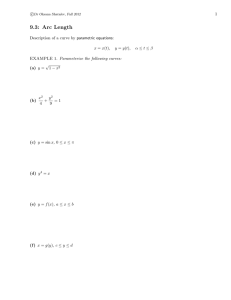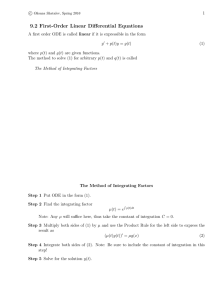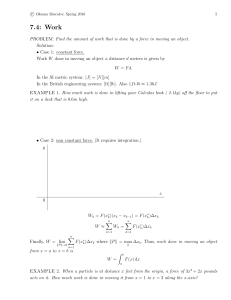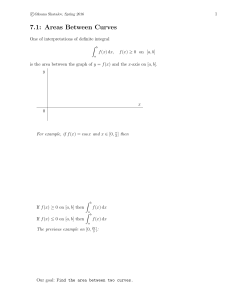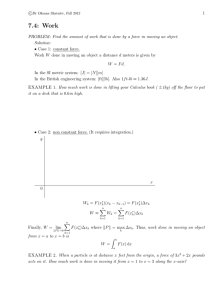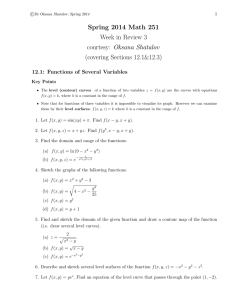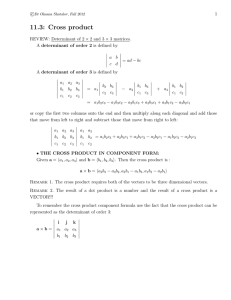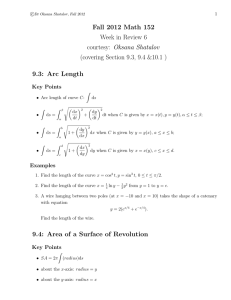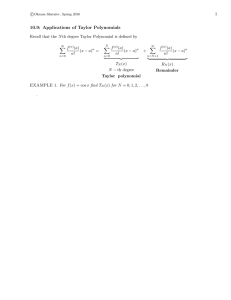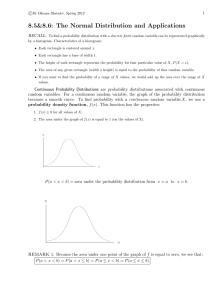Document 10581192
advertisement
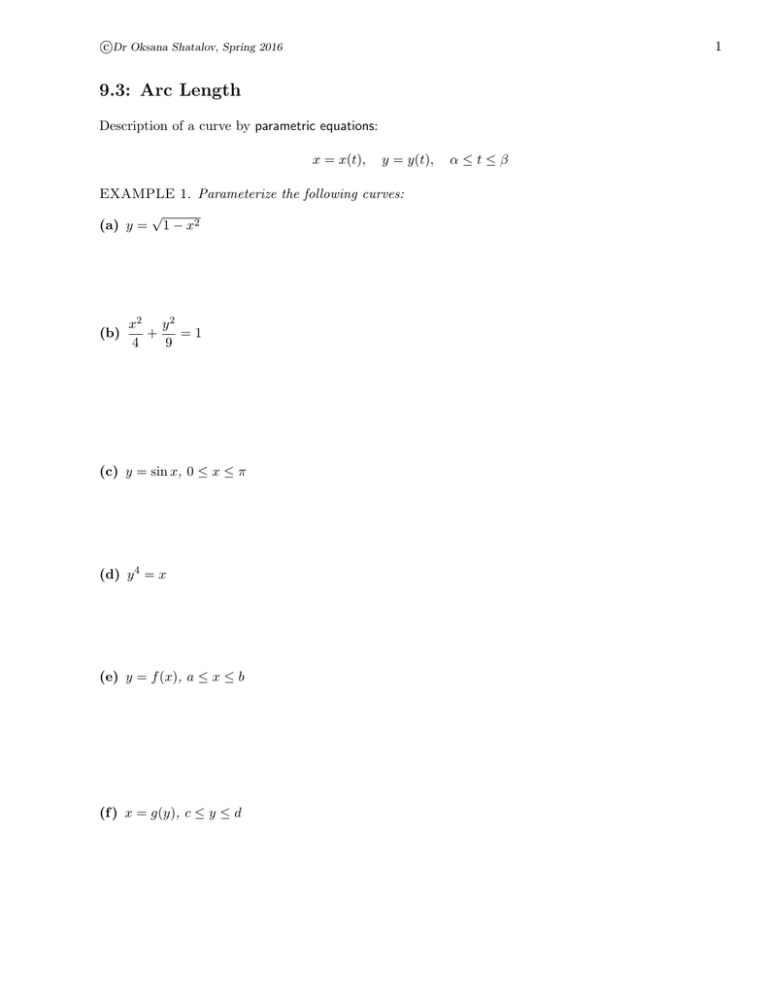
c Dr Oksana Shatalov, Spring 2016 1 9.3: Arc Length Description of a curve by parametric equations: x = x(t), y = y(t), EXAMPLE 1. Parameterize the following curves: √ (a) y = 1 − x2 (b) x2 y 2 + =1 4 9 (c) y = sin x, 0 ≤ x ≤ π (d) y 4 = x (e) y = f (x), a ≤ x ≤ b (f ) x = g(y), c ≤ y ≤ d α≤t≤β c Dr Oksana Shatalov, Spring 2016 2 DEFINITION 2. A curve C : x = x(t), y = y(t), α ≤ t ≤ β, is called smooth if the derivatives x0 (t) and y 0 (t) are continuous and not simultaneously zero on [α, β]. The length of a smooth curve C : x = x(t), y = y(t), α ≤ t ≤ β, assuming that C is traversed exactly once as t increases from α to β is Z β q [x0 (t)]2 + [y 0 (t)]2 dt =: α Z ds, C where ds is called differential of the arc length function and q ds = [x0 (t)]2 + [y 0 (t)]2 dt y x 0 EXAMPLE 3. Find the length of the curve C : x = 3t − t3 , y = 3t2 , 0 ≤ t ≤ 2. c Dr Oksana Shatalov, Spring 2016 Particular cases for the differential of the arc length function: s 2 dx 2 dy ds = + dt dt dt • C is given by y = f (x), a ≤ x ≤ b • C is given by x = g(y), c ≤ y ≤ d EXAMPLE 4. Find the arc length of the graph of y = ln cos x from x = 0 to x = π/4. 3 c Dr Oksana Shatalov, Spring 2016 4 EXAMPLE 5. Find the arc length of the curve (y − 1)3 = x2 from x = 0 to x = 8. EXAMPLE 6. A telephone wire hanging between two poles (at x = −100 and x = 100) takes the shape of a catenary with equation y = 75(ex/150 + e−x/150 ). Find the length of the wire.
